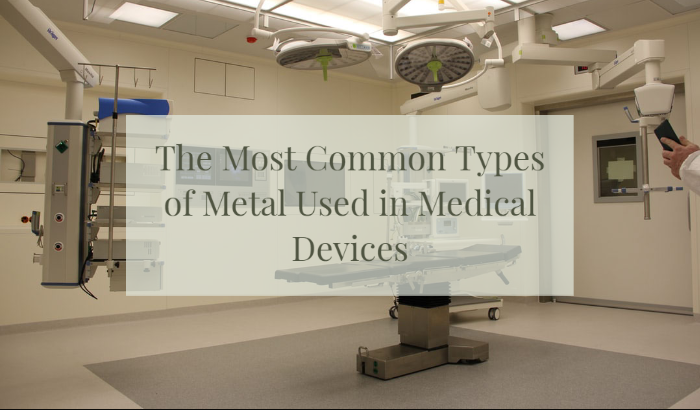The Most Common Types of Metal Used in Medical Devices

Advancements in medical technology are helping people live longer and healthier lifestyles. These innovations are made possible through the applications of thin metal strips in medical devices. As the sheet metal market continues its annual growth rate of 4.09% each year, newer technologies in the medical field will be able to be developed to improve people’s lives. Here are the most popular types of thin sheet metal used in medical devices.
Titanium
Titanium is the most popular metal used in medical devices, especially for internal use in humans. It can resist corrosion and connect with human bones with less risk of rejection than any other metal, including stainless steel. This metal can be used in implanted devices that dispense medicine, control heart function, and provide neurostimulation and doesn’t interfere with CT scans or MRIs. These thin metal strips can also be found in orthopedic plates, rods, and pins. Titanium is also ideal for surgical instruments such as Lasik eye surgery equipment, forceps, drills, retractors, and needle holders.
Tantalum
Tantalum is also popular as a metal used in medical devices. It is highly resistant to corrosion, which makes it ideal for permanent bone implants. This metal has been used in the medical industry for over 50 years. It is commonly used in stents and vascular strips to help prevent arteries from collapsing. Tantalum is also MRI compatible as well.
Copper And Brass
Brass and copper are mainly used in the medical industry for external hospital equipment. It is used to help transmit signals to diagnostic tools and small implants. Copper also has antimicrobial and antibacterial properties which make it highly suitable in hospital settings. It can be used in hospital linen and clothes to help reduce rates of infection.
Nitinol
Nitinol is a nickel-titanium alloy that features superelastic properties. It can be manufactured at one temperature and then molded at another temperature into a smaller form for insertion into the human body. Body heat then expands the metal into its original size. This makes it ideal for stents, implants, staples, and bone anchors. It can also be used in devices that reconnect intestines and locate breast tumors.
These are only a few of the metals used within the medical industry. As you can see, the thin metal strips in medical devices can perform a wide range of functions to help patients live healthier lives. More applications are being developed every day. This will help us live longer and have a better quality of life as we age in the future.


